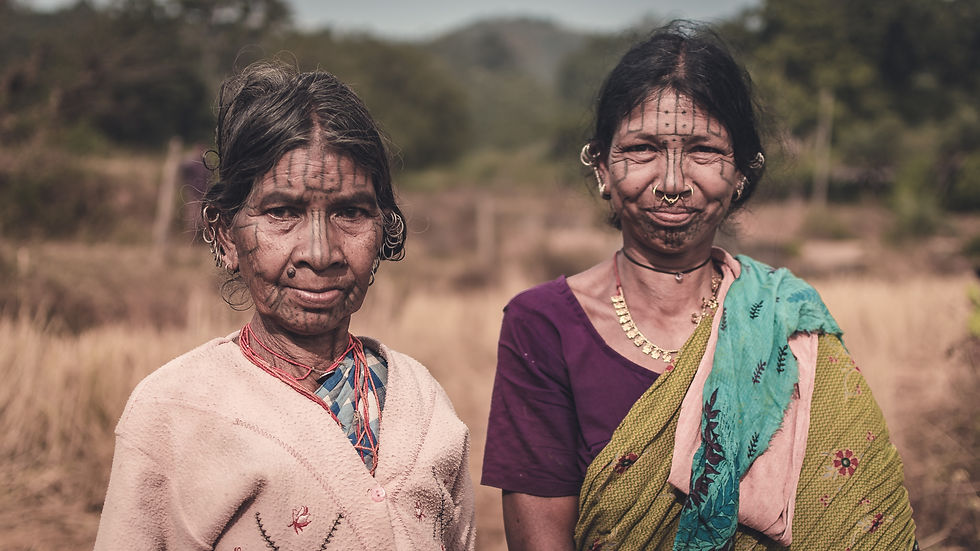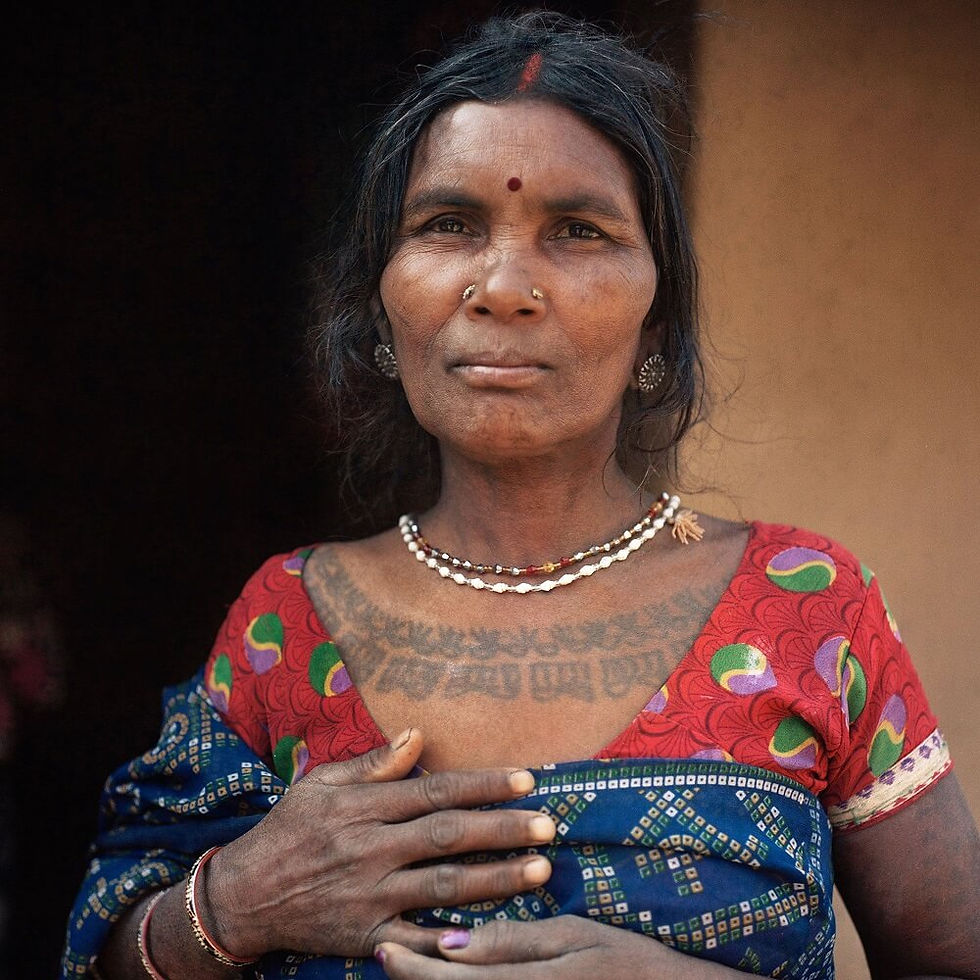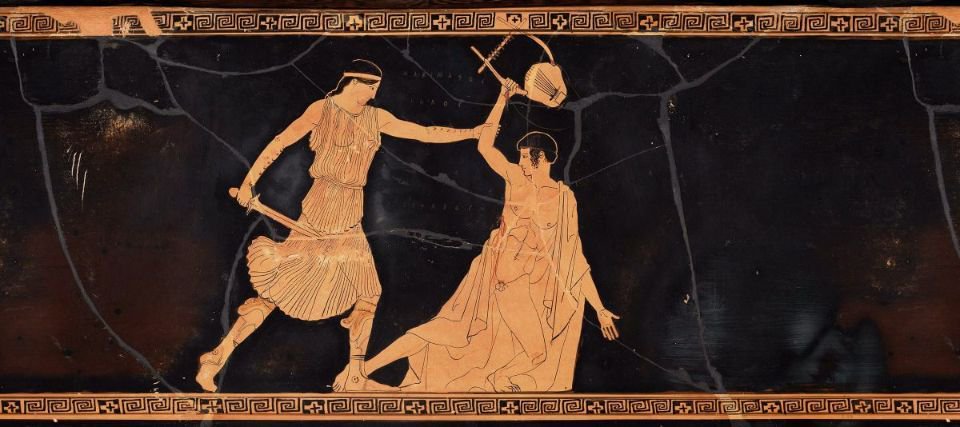Archeologists and Anthropologists have done a tremendous job in unearthing the stories of the past, the lifestyle of our great ancestors, and figuring out how things worked during prehistoric times. Having seen ancient murals and looking at the vividness of their imagination, we've learned that boldness, beauty, and expressiveness was never a new concept. If anything, women back then were more proactive and creative when it came to being demonstrative about their values and characteristics as compared to our generation, these days it is considered rebellious.

With the rise of feminism, women have become more bold and expressive and freely resort to getting inked. A thought that was frowned upon just a decade ago. Interestingly, the normalizing of tattoos on women has just caught up with a practice that is 1000s of years old.
See any pictures of mummified Egyptian women, and you will find intricate tattoos on them. Take a close look at the women depicted in Greek vases; the Thracian women can be seen donning sleeve tattoos. These vases can be dated back to the 5th century BC. In the Maori culture, the eldest daughter would get a tattoo as part of a sacred ceremony. What this shows is that tattoos on women were something prevalent. It signified courage, boldness as well as beauty.
Take the pacific culture, for example, where the tattoo industry is dominated by men. However, the stories of the past say that the ancestral gods wanted women to safeguard the practice and get tattooed ahead of men. This didn't stop both men and women of the Maori society from getting tattooed in the past, before the British invasion in the 19th century.
Here's a closer look at what tattoos meant for women of different cultures:
Maori

In the Maori culture, the tattooing of the lips and chin of the elite family's eldest daughter was considered 'Tapu' (sacred). This rite was called ahi ta ngutu (holy fire). During the process, tribe members would surround the girl getting tattooed and sing specific whakatangitangi (repetitive songs). This was supposed to help ease the pain and divine process for the child. The music for women was whakawai taanga ngutu.
These tattoos' symbols and placement would typically depend on their descendants and who their ancestors were. The placement was the most critical aspect of the ceremony, and it was not taken lightly. It was also considered that people without tattoos were papatea (unmarked, it gave them a lower status). Those who were tattooed were deemed to be attractive and of higher status.
Egyptian

One of the oldest discovered tattoos was found on mummified women from ancient Egypt. The Egyptians had a straightforward method of creating their tattoos. All they needed was a needle, razor, and a small container containing dried carbon-based black pigment. This was enough to make tattoos almost everywhere in the past, not just Egypt. It also took immense wrist strength to poke dots repeatedly on the body to create a motif.
The Egyptians tattooed their woman to signify their beauty and goodness. They would tattoo Wadjet eyes that are supposed to be divine and represent God's protection. These tattoos were done on the neck, shoulders, and back.
Now, let's take a look at the Indian representation of the tattoo culture:
The Santhals

Hailing from Bengal and Bihar, this tribe is known for making specific tattoos based on many aspects. Ensuring that both genders get a unique tattoo design of their own, the tattoo placement would depend on the age of the person getting the tattoo. They also have tattoos for different stages of life. The primary thought behind tattooing the women was that the pain would prepare them for maternity and give them the strength to face a life full of challenges and inspirations. These girls would be marked on various body parts with flower-patterned tattoos.
Toda Tribe

Pachakutharathu - This is the name for long-lasting tattoos in the Southern side of India. It was a common theme in Tamil Nadu, particularly before 1980. Tattoo artists known as Korathi, in this part of the world, were usually wanderers who were in search of clients. They would ink the Kollam - a graceful and intricate design believed to deceive evil beings and protect them until they are reunited with their ancestors in the afterlife. These tattoos could usually be found on the hands, knees, and shins.
The Dhanuks

Traditionally, the women of this tribe from Bihar were tattooed for their own safety. It was believed that tattooing them on their face and body would make them ugly and deter rapists from laying hands on them. Despite covering their faces with a veil, it was not enough to keep them safe and hence, this solution came into practice. Apart from this, tattooed women signified that they were from a lower caste.
The Ao Nagas

In Nagaland, the girls are tattooed in their teenage years. If not, it is considered a shame for them, and they will not have a good marriage. The girl is held down by several women, and the needles are then pressed onto their skin. Interestingly, the color is derived from the soot made from the sap of a tree bark called Napthi. While the process is on, no men can be around, a strict rule that has to be followed.
The Rabaris

The Rabaris are a tribe from Gujarat, and the women call their tattoos "Trajva." Getting a Trajva tattoo is a sign of strength, as getting the tattoo is not just painful. It is unbearable and very prone to infections. Girls close to getting married get this tattoo done as bare skin is considered shameful. These tattoos are done on many parts of the body like the face, throat, forearms, neck, etc. The most common signs are scorpions and snakes when it comes to the motif.
In most cases, getting tattooed in ancient times was a rite of passage for young girls. These brave souls experienced excruciating pain to prove themselves. It was a sign that the tattooed woman now had permanent jewelry with them, that no one could take, ever.
Similarly, women, these days are getting tattooed to express themselves. If you think about it, nothing really changed with regards to female tattoos.
If you are interested in going for ancient tattoos, this compilation could help you get started. Of course, these designs can and will be customized to suit your style :)
Now you know that tattoos have been around almost since the start of mankind, these symbols held a lot of power over the communities and symbolized protection and belonging to the tribe. Why not follow your ancestors' footsteps and go for such unique and powerful tattoos with deep meaning and spiritual values to express yourselves like never before?
So, book your free consultation, and let's discuss your tattoo ideas!
As they say - actions speak louder than words ;)
Image courtesy: Pinterest



























